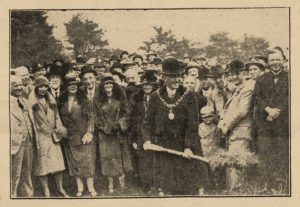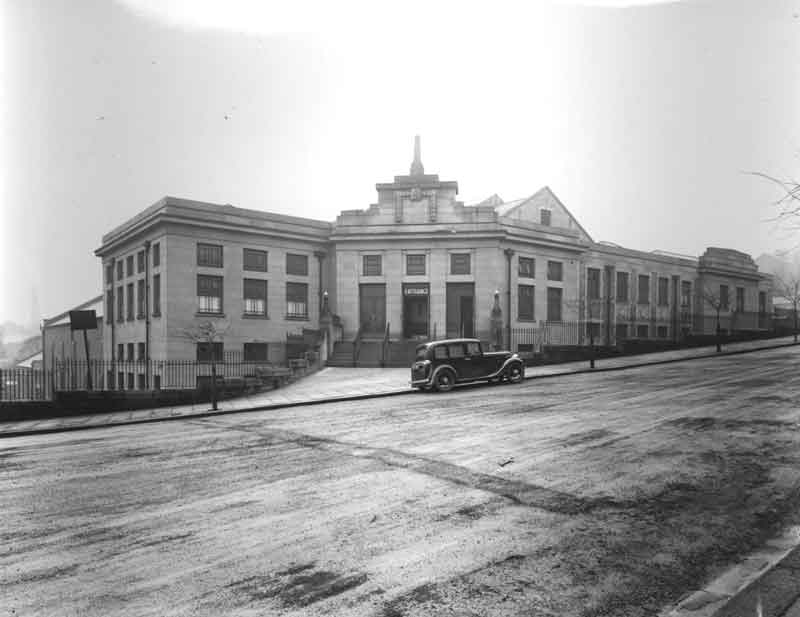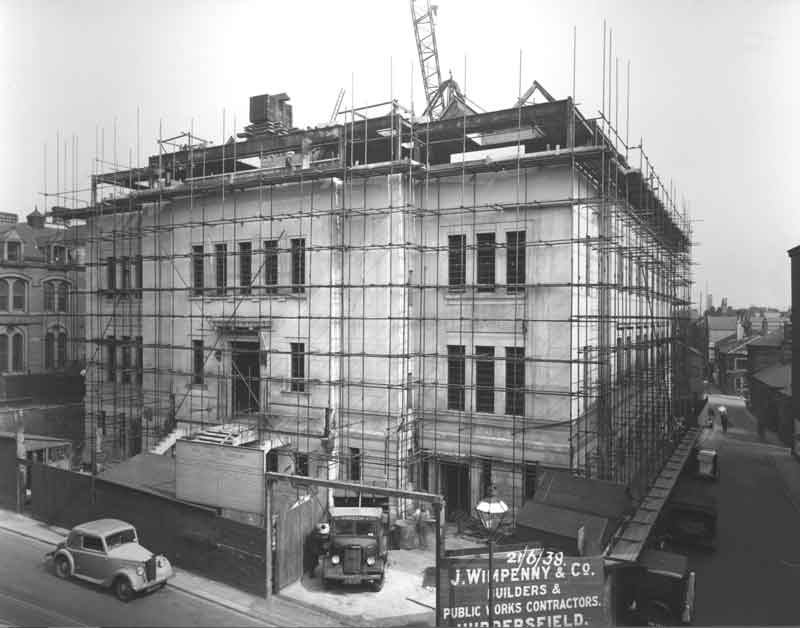Huddersfield Corporation: 1928 to 1968
The 60th anniversary of the Incorporation of the Borough was primarily marked by a series of municipal events on Wednesday 26 September 1928, with no formal celebrations taking place in July.
Firstly, Mayor Rowland Mitchell dug the ceremonial first sod of earth “in a garden off Cambridge Road” for the new public baths. The Cambridge Road Baths had been planned as early as 1918, but post-war austerity and government imposed spending restrictions led to the project being postponed for a decade. The baths were officially opened in August 1931, when Miss E.T. Gledhill was the first swmimmer, followed by William Stoney who had competed in the 1920 and 1924 Olympics. During the winter months, the pool was covered over and was used as a dance hall. The rise in attendance figures during the 1960s led to the town council’s decision to build a multi-purpose sports centre. The baths eventually closed in the late 1990s and the building was demolished to make way for a car park.
The mayor and councillors then went to Leeds Road where Alderman Tom Woffenden cut the ribbon to open the Corporation’s new bus depot. Mrs. Woffenden was then invited to perform the duties of a bus conductor on the first bus to enter the depot.
The group then proceeded to St. Andrew’s Road to formally open the new £120,000 turbine floor of the Corporation’s electricity works. The two new turbines were decorated in the colours of Huddersfield football and rugby clubs, and were christened “Florence” and “Alice”.
In a decidedly unglamorous end to the day’s events, the mayor then formally opened the Corporation’s new bio-aeration plant at the Deighton sewage treatment works. Capable of treating 3,000,000 gallons of effluent per day, the scheme was the result of research by the sewerage works’ manager, Mr. W. D. Scouller.
Towards the end of the year, the town council announced that twenty properties “designed for old couples” would be built to mark the diamond jubilee. Known as the Cottage Homes, these are situated at Waterloo and were completed by November 1930.
There were tentative plans to build a new library near to St. Peter’s church as part of the 1928 celebrations, but this didn’t come to fruition. Instead, the current Public Library & Art Gallery was built a decade later and opened in April 1940.
During the Second World War, Huddersfield Corporation took park in the the “Holidays at Home” government initiative which encouraged people to reduce the strain on public transport and petrol supplies.
Following their acquisition of the Ramsden Estate in 1920, the Corporation expanded their estate portfolio with the purchase of the Lockwood & Rashcliffe Estates in 1954, the Thornton Lodge Estate in 1960 and the Cowlersley Estate in 1961. By 1968, the Corporation’s property portfolio included 12,100 hou8ses, 55 schools, 34 shops, 17 welfare homes and 9 children’s homes.
The 1950s and 1960s saw a period of redevelopment which included the clearance of slum housing and the rehousing of over 2,300 tenants, the closure of the Model Lodging House on Chapel Hill, the demolition of the old Market Hall on King Street, and the construction of a ring road and new civic buildings.



